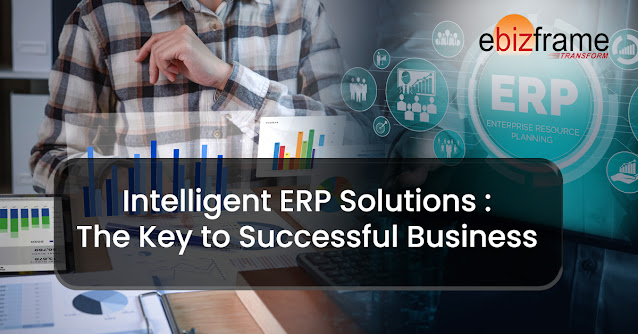QlikView Vs Power BI & Business Intelligence Comparison Guide
If you have a lot of data in your company but don’t know what to do with it, investing in a business intelligence (BI) platform is a fantastic option. Although both Qlik view and Power BI enable you to expand insights by examining data from numerous sources, some key differences exist between the two. This blog will learn about the major differences between Qlikview and Power BI on a few parameters
What is Power BI?
Microsoft’s Power BI is a business analytics tool. Its objective is to provide dynamic visualizations and business intelligence capabilities using an interface that allows end-users to design their reports and dashboards. It’s a component of Microsoft’s Power Platform. It includes data preparation, data discovery, and interactive dashboards, among its data warehouse capabilities. The ability to load bespoke visualizations is one of the product’s primary differentiators.
What is Qlikview?
Qlikview, as a business intelligence solution, provides a variety of tools to help users make better decisions faster. It offers instant response time with no limitations on loading time or data amount. Furthermore, the tool enables users to conduct direct and indirect data searches. It enables faster data integration into a single application that collects data from multiple sources.
Aside from that, Qlik View is a fantastic tool for creating dynamic dashboards, applications, reports, and analyses. It’s a self-service BI solution that allows for speedier development and change management for end-users. Furthermore, this tool allows you to access, analyze, and recover data from various devices.
Qlikview vs Power BI: Comparison
It is noteworthy that two of the four leading analytics and business intelligence platforms listed in the 2019 Gartner Magic Quadrant for Analytics and Business Intelligence Platforms include Qlikview (as part of the wider Qlik platform) and Microsoft Power BI. It should be noted that while both options rank highly, Power BI (Microsoft) is miles ahead of its competition.
1. Data Sources :
All the data sources are consolidated into one platform with QlikView, so you have much easier access to your information. Data from both internal and external sources can be combined for a comprehensive view of all your data. All of your data sources can also be connected together in Power BI to create a single, simplified platform. As a result, data can be more easily accessed and analyzed when you’re trying to turn it into action. The Power BI platform makes it easy to discover data trends and make informed business decisions. Microsoft also offers the ability to connect to Azure databases. However, it does not stop there. Third-party services such as Salesforce and Google Analytics can be integrated into Power BI
2. Data Visualisation :
In order to facilitate easy viewing of data, QlikView uses color-coded customization. The data that is irrelevant is coloured gray rather than being removed. Not only does this save you time, but the data can also be examined separately to see if it contains something of value. Beginners may, however, have difficulties navigating the self-service options of QlikView. Those who aren’t tech-savvy may have issues creating visuals due to the filtering system’s complexity. On the other hand, Power BI provides a very user-friendly interface, so anyone with no technical training can use it. The Power BI software includes interactive reports, scalable dashboards, and embedded visuals. Interactive panels contain tiles that display separate data. Each tile is linked to a dataset for comparison and analysis. The reports are written from scratch and pared down to only the most critical information, so that the users will not be overwhelmed or confused.
3. Ease of Operation :
Power BI provides basic dashboards and reports similar to MS Excel in the sense that they are easy to comprehend and consume. Furthermore, these reports and dashboards may be accessed from any device, including mobile and desktop computers. Qlikview is a little tough to comprehend because it has a lot of functionality and display options that might not bode well with someone who is not from data analysis background.
4. Accessibility and UI :
Because of its more advanced learning curve and functionality, QlikView is better suited for data scientists or developers. It has highly adjustable and adaptable UI setups, making it simple for analysts to tailor their setup to their specific needs. Meanwhile, Power BI is a more user-friendly tool in general, with various UI-based, visual functions that make it simpler to use by anyone in an organization.
5. Ease of learning :
Working with QlikView would be simple for people with a Data Science background. For others, it would be too complicated. In contrast, Power BI, with its user-friendly interface, offers a better learning curve.
6. Mobility and Sharing :
To consume reports, QlikView demands a large screen and focuses on the desktop experience. QlikView does not allow or support report users to create their own visualizations. Where Power BI was created with a major emphasis on cloud-based mobile and tablet devices, power BI has its own mobile app (Power BI Mobile), and you can select to construct a Power BI report from the mobile view. For collaborative purposes, Power BI makes it simple to generate and share graphics based on underlying datasets.
Conclusion :
Microsoft Power BI has an advantage over QlikView because of its extensive platform workflow connectors and advanced platform support for Cloud BI. Adopting Power BI would be a no-brainer if you already utilize Office 365 and SQL Server. Because the Power BI mobile app is integrated with the rest of your software, it gives you an extra advantage. Power BI is invaluable to sales teams who need real-time data and insights on the fly. Most importantly, the pace of innovation at Power BI is a welcome relief.
When deciding between two BI platforms, it might be a difficult undertaking that necessitates extensive research. Both QlikView and Power BI are excellent BI tools, but Power BI will be a better fit for your business due to its ease of usability and rich functionalities that can also be availed on cloud.
Our Power BI development and consulting teams have extensive knowledge of how, where, and why to build custom Power BI solutions. We can integrate data from a wide range of sources, including internal and external data, and can deploy APIs and seamless integrations with Microsoft Suite, Hadoop, Salesforce, Spark, Oracle, and Google database, among others.
By leveraging Power BI, we will help you explore advanced analytics quickly, providing you with greater insight. Through our experience as a Microsoft Power BI partner, we help businesses uncover valuable trends and correlations using stunning visuals to make data-driven decisions.
Get in touch with us marketing@essindia.com




Comments
Post a Comment